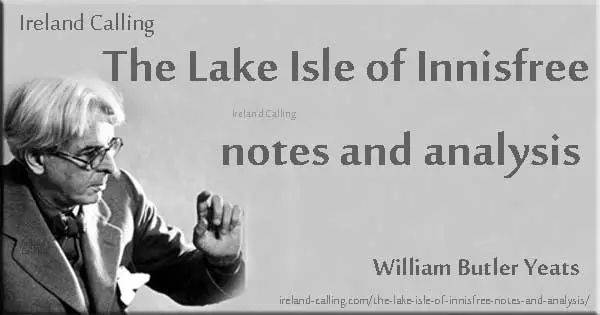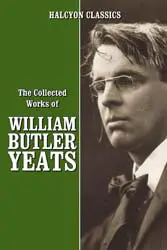Innisfree is an uninhabited island in Lough Gill in Co Sligo. Yeats spent much of his childhood and youth in Sligo and loved the people, the natural beauty and the folklore of the area.
The Lake Isle of Innisfree
Ireland’s 100 favourite poems
W B Yeats
He often visited the lake with his cousin Henry Middleton. They would sail out to observe the wildlife and to listen to stories of the local boatmen.
When Yeats was growing up, his father read to him from Walden by the American writer Thoreau. Yeats was moved by the ideas it contained about a return to nature.
Those ideas and memories of Innisfree stayed with him for many years and came to fore when he was living in London. The busy lifestyle of the big city didn’t always agree with him.
He was constantly short of money, which didn’t help his mood. It’s perhaps not surprising therefore that he should sometimes wish for a return to a simpler lifestyle – a wish no doubt repeated by millions of people before and since.
Yeats said he got the idea for the poem as he walked along a street in London called the Strand and heard the sound of a water fountain in a shop window. It reminded him of the lapping of the water at Innisfree, and it set a train of thought in motion about getting away from it all.
The Lake of Innisfree celebrates simplicity. The ideal world Yeats imagines doesn’t involve a wealth of glamour. He just wants a small cabin and a little space to produce his own food. The wattles referred to are wooden stakes made from tree branches to provide a cabin framework and roof structure.
Yeats said the line “and noon a purple glow” referred to the reflection of the heather on the water.
The desire to commune with nature and hear again the “water lapping” isn’t just a passing fancy. As he stands in London “on the pavements grey,” he hears it in the “deep heart’s core”.
Yeats did in fact often return to the Sligo area of his youth, and often stayed at the home of his wealthy patron Lady Gregory, at her home at Coole Park.

The Lake Isle of Innisfree
I will arise and go now, and go to Innisfree,
And a small cabin build there, of clay and wattles made;
Nine bean rows will I have there, a hive for the honey bee,
And live alone in the bee loud glade.
And I shall have some peace there, for peace comes dropping slow,
Dropping from the veils of the morning to where the cricket sings;
There midnight’s all a glimmer, and noon a purple glow,
And evening full of the linnet’s wings.
I will arise and go now, for always night and day
I hear lake water lapping with low sounds by the shore;
While I stand on the roadway, or on the pavements grey,
I hear it in the deep heart’s core.


